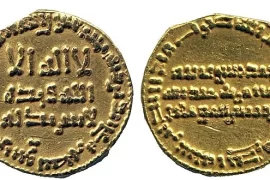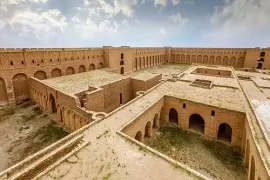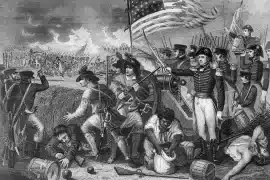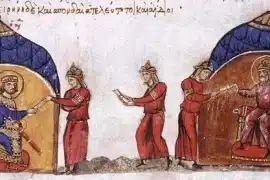The Battle of Tours, also known as the Battle of Poitiers, is a significant event in European history. It marked the turning point in the Muslim invasion of Europe. It took place on October 10, 732, between the Franks led by Charles Martel and the Muslims led by Emir Abdur Rahman. The battle resulted in the defeat of the Muslim army. It is significant because it halted Muslim expansion into Europe. It also marked the beginning of the Latin West’s counteroffensive.
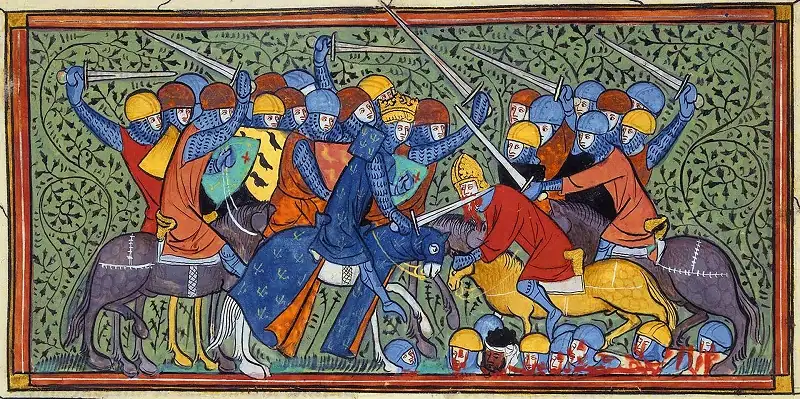
Historical Background: The Rise of the Barbaric
We should see the Battle of Tours in its historical context. In the 5th century, most of Western Europe was overrun by barbaric Gothics (Germanic). They had a strong commitment to their group and race. This commitment fostered cohesion and enabled them to overrun the Roman Empire. The Visigoths, Ostrogoths, and Franks were the dominant groups. Franks consolidated their hold on Gaul.
The Church of Rome injected itself into this medley of barbaric kingdoms. By the 6th century, the Goths had settled down in the conquered areas as landlords. The church established a series of monasteries throughout Western Europe. It entered into a working relationship with the landlords and the strongmen. The local political structure of the church revolved around the monasteries. These religious bodies levied their own taxes in return for dispensing ritual rites. In time, they became rich, and their power grew in proportion to their wealth.
The Muslim Invasion of Europe
The Berbers played a significant role in the history of the Maghrib. Their impact is comparable to the Germanic peoples’ impact on European history. The Berbers were a sturdy, resilient, and handsome race of people. They inhabited the Atlas Mountains. Arab General Uqba bin Nafi subdued them in his advance toward the Atlantic Ocean. But periodic uprisings continued for more than a century. Muslim rulers launched repeated expeditions to contain the uprisings.
The invasion of Southern France was a part of the Muslim campaign against the Visigoths. The first incursion occurred during the reign of Caliph al Walid. It was successful in subduing Sorbonne and Lyons (713). A second raid made in 714 captured Normandy. An expedition in 731 under Anbasa bin Saheem extended Muslim dominions beyond Carcasonne. But Anbasa was killed during this campaign. After Anbasa, Abdur Rahman bin Abdullah was appointed the governor of Spain. He crossed the Pyrenees in the spring of 732 after careful preparations. It was the immediate prelude to the Battle of Tours.
The Battle of Tours: The Turning Point in the Muslim Invasion of Europe
The first Frankish resistance came from the Duke of Achetain near the port of Borden. Rahman’s army defeated him and captured Borden. After subduing southern France, Emir Abdur Rahman turned north. On the plains of Tours, near the modern city of Paris, he met the Frankish chief Charles Martel. In the Battle of Tours, Charles Martel had the support of neighboring Frankish and German chiefs. The Frankish infantry stood its ground against the Muslim cavalry. Emir Abdur Rahman himself led the charge but fell in combat on the second day of the battle. The Muslim armies withdrew under the cover of night having lost more than 100,000 men in the battle.
The Aftermath of the Battle of Tours
The aftermath of the battle was significant. Latin West established itself as the counterbalance to the rising Muslim Empire. The Islamic armies had to withdraw from northern Europe. Their expansion halted. The battle also boosted the prestige of Charles Martel. He solidified his position as the undisputed ruler of the Franks. He continued to consolidate his power and expand his kingdom. It later became the Carolingian Empire under his grandson, Charlemagne.
The Battle of Tours had important consequences for the Islamic world as well. The defeat shattered the myth of Muslim invincibility. It caused a crisis of confidence among the Muslim rulers. It also created a power vacuum in the Islamic Empire, which led to internal strife and division. The Berbers, who had been restive for some time, rose in rebellion and challenged the Arab rulers. The Abbasid Revolution in Central Asia also weakened the Islamic Empire. It led to the overthrow of the Umayyad dynasty, which had ruled the empire at the time of theBattle of T
Summary of The Battle of Tours
The Battle of Tours was a pivotal event in the history of Europe and the Islamic world. It marked the limits of Muslim expansion into northern Europe. It also established the Latin West as a significant power.
The Battle had far-reaching consequences for the Islamic Empire. It led to internal strife and the overthrow of the ruling dynasty.
The Battle of Tours remains a symbol of the clash between the Christian West and the Islamic East. Still, we can feel its legacy.

